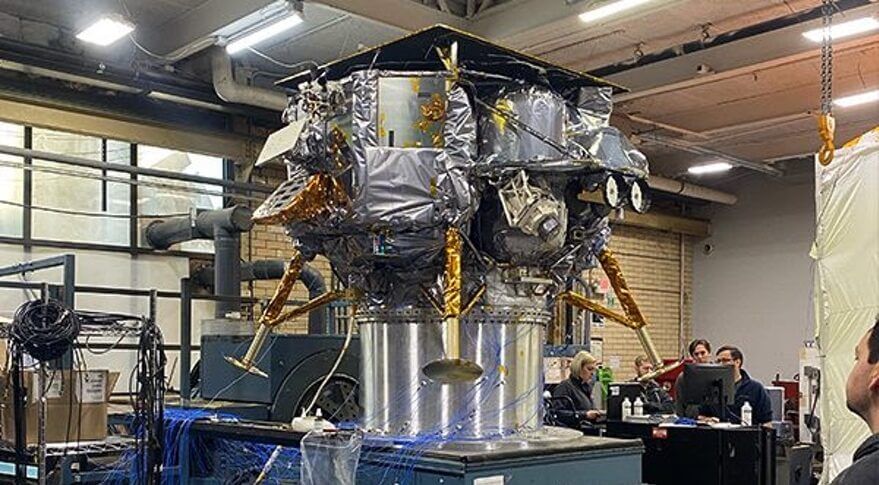
Astrobotic lander undergoes tests ahead of launch (Image Credit: Space News)
WASHINGTON — Astrobotic’s first lunar lander has passed a key set of acceptance tests, keeping the spacecraft on schedule for a launch in early 2023.
The company announced Dec. 8 that its Peregrine lander completed vibration and acoustics testing at a commercial facility on New York’s Long Island. The tests confirmed the spacecraft can handle conditions during its launch on a United Launch Alliance Vulcan Centaur.
“The completion of environmental testing marks a critical step forward in our program,” Pete Frye, mechanical and fluid systems manager at Astrobotic, said in a statement about the tests. “This testing ensured the spacecraft is fully capable of meeting the rough environments it will feel during launch, transit and landing on the moon.”
The lander is now undergoing electromagnetic interference testing, which will be followed by thermal vacuum tests. Once those tests are complete, the company said, it will ship the lander to Cape Canaveral, Florida, to be integrated with the Vulcan Centaur for a launch currently scheduled in the first quarter of 2023. That launch will be the inaugural flight of the Vulcan Centaur.
Astrobotic said the recent tests keep the mission on schedule. “The Astrobotic team is working tirelessly to an aggressive schedule for delivery to the launch site and, in fact, these recent tests were completed ahead of schedule,” said Sharad Bhaskaran, Peregrine mission manager at Astrobotic. “The momentum to launch is apparent in the team’s excitement.”
Peregrine is Astrobotic’s first lunar lander, carrying a set of payloads for NASA through its Commercial Lunar Payload Services (CLPS) program as well as from other space agencies and companies. Peregrine is designed to carry up to 120 kilograms to the lunar surface and operate for one lunar day.
Astrobotic previously announced that the first Peregrine mission would land in the Lacus Mortus region of the moon. However, in a presentation at a Dec. 6 meeting of NASA’s Planetary Science Advisory Committee, Joel Kearns, deputy associate administrator for exploration in NASA’s Science Mission Directorate, showed a chart that had the mission landing instead at a region called Gruithuisen Domes, which is the target of a future CLPS missions. Neither NASA nor Astrobotic have formally announced any change in the landing site for Peregrine.







